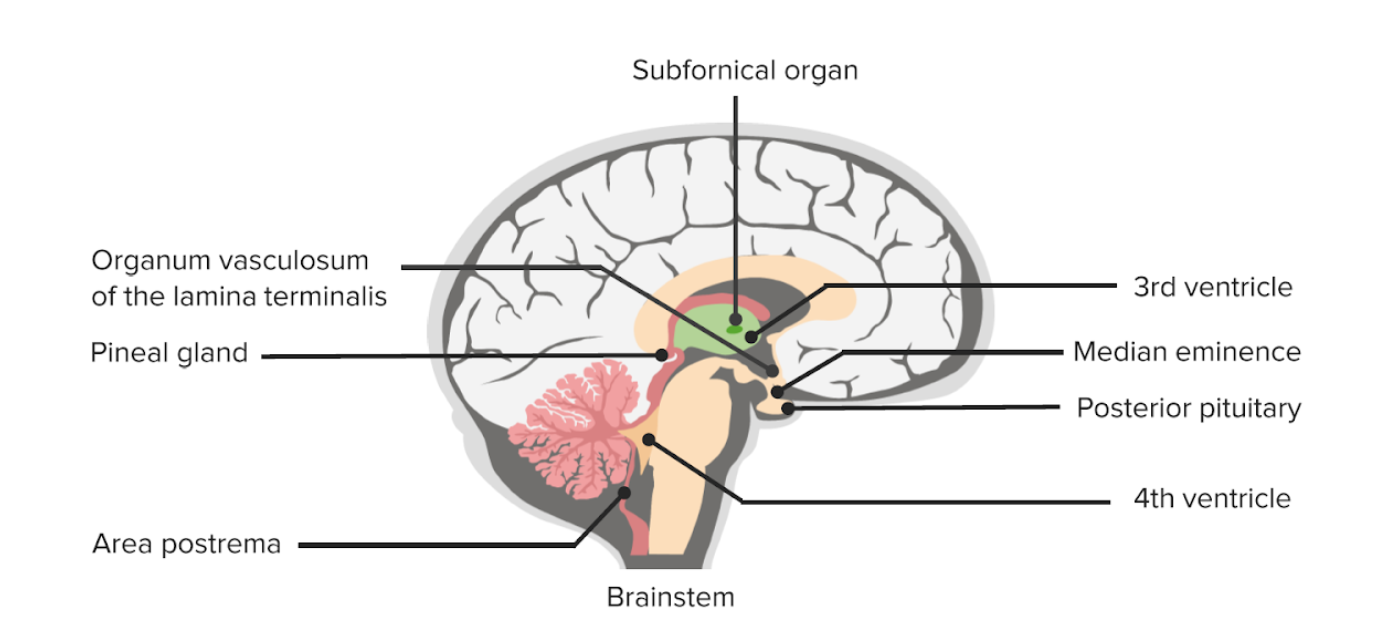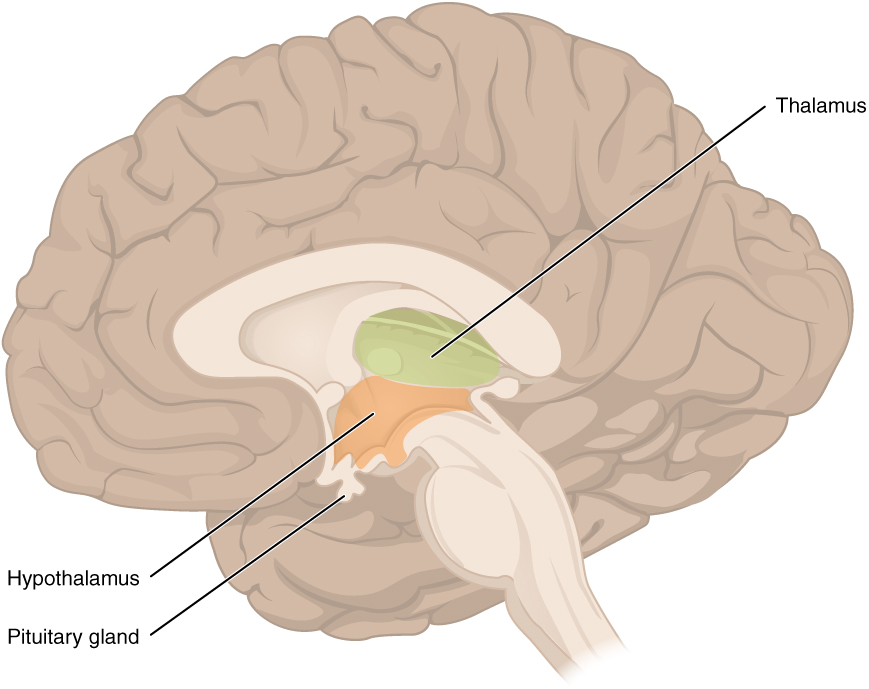Playlist
Show Playlist
Hide Playlist
Hypothalamus: Body Temperature Regulation
-
Slides 06 BodyTemperatureRegulation GeneralPhysiology.pdf
-
Download Lecture Overview
00:00 Where might these specific EP3 receptors be located? And it seems like they are located most prominently in the anterior and preoptic areas of the hypothalamus. 00:14 And why these are important or these are important for responding to temperature changes such as heat, responding to temperature changes such as cold. So whether you’re responding to heat and sweating or cold and shivering, these are the specific hypothalamic nuclei that we are wanting most concern about. 00:34 So the neurons in the preoptic anterior hypothalamus seemed to be the ones that are most prominent to undergo heat retention mechanisms, such as shivering, and heat dissipation mechanisms, such as sweating. 00:48 So now, these prostaglandin E2 molecules can stimulate EP3 receptors in these preoptic anterior hypothalamic neurons and these will induce the fever response. 01:02 So now, we want to compare fever to other types of hyperthermia. 01:07 To do that, we are going to compare and contrast fever versus exercise, because I think these provides us a nice mechanism by which we can look at the differences between increasing internal temperature via two different mechanisms. 01:22 So both fever and exercise increase internal body temperature. And we all know that, we all have a fever at one point, and we’ve all done a little exercise at one point or work. 01:31 We know, that both of those that increase our body temperature. But they do it in to dramatically different ways. 01:38 So let’s look at fever first. Fever increases body temperature by first increasing the temperature set point. 01:48 So as soon as your response into either a bacteria such as LPS, you will then have a cytokine response, that cytokine response then goes via a prostaglandin E2 to an EP3 receptor on a preoptic anterior hypothalamic neuron and that increases the temperature set point. 02:09 That drives there to be an increase to body temperature by things like shivering, causing vasoconstriction, ways to minimize body heat loss. By doing all those items, you start to increase your body temperature. 02:26 Exercise, is almost the exact opposite. Body temperature increases but your body is trying to cool itself. 02:34 So during exercise, you’re sweating, you are vasodilating your skin, you are definitely not shivering. 02:41 What you are trying to do is loss heat. And even though you are trying to loss heat, body temperature gradually raises because you’re producing more heat than you are losing it. 02:54 Comparing that with fever again, there is a change in the set point and that drives up in the internal temperature versus a heat stress whether be exercising induced. Usually there is an increase in an internal temperature because of an increase of metabolism, even though set points stays flat.
About the Lecture
The lecture Hypothalamus: Body Temperature Regulation by Thad Wilson, PhD is from the course Body Temperature Regulation. It contains the following chapters:
- Hypothalamus
- Comparison between Fever and Passive- or Exercise-Heat Stress
Included Quiz Questions
Which hypothalamic nuclei are involved in the mechanisms of temperature regulation?
- Anterior and preoptic nuclei
- Paraventricular nuclei
- Supraoptic nuclei
- Lateral nuclei
- Ventromedial nuclei
How does body temperature increase in fever?
- By increasing the body temperature setpoint
- By promoting sweating
- By inhibiting shivering
- By stimulating the production of prostaglandin PGE2
- By stimulating the formation of EP3
How is the body-temperature increase induced by exercise controlled?
- It's counteracted by mechanisms aiming to maintaining the temperature setpoint.
- It's controlled by sweating only.
- It's increased by raising the temperature setpoint.
- It's maintained elevated by the release of PGE2.
- It's dependent on the concentration of EP2.
How do the neurons of the anterior and preoptic hypothalamus regulate body temperature?
- By engaging the EP3 receptor
- By reducing the effect of endogenous IL-1 beta during exercise
- By mechanisms totally dependent on IP3
- By reducing the production of IP3 in LPS-induced fever
- By increasing production of IP3 when aspirin is given
Which of the following best described the fever-producing neurons of the pre-optic, anterior hypothalamus?
- GABAergic
- Cholinergic
- Glutaminergic
- Dopaminergic
- Adrenergic
Customer reviews
5,0 of 5 stars
| 5 Stars |
|
5 |
| 4 Stars |
|
0 |
| 3 Stars |
|
0 |
| 2 Stars |
|
0 |
| 1 Star |
|
0 |





